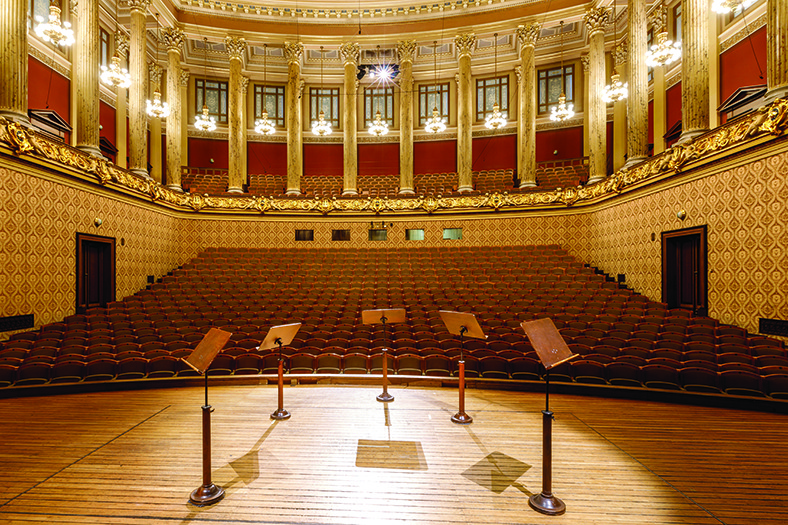The Rudolfinum is also the home of the Czech Philharmonic Orchestra, which first performed in the building’s world-famous concert hall in 1896 under the baton of famous Czech composer, Antonín Dvořák. The 1,100-capacity Dvořák Hall – one of the oldest concert halls in Europe – is renowned for its remarkable acoustics, making it an extremely sought-after venue for recording classical works.
The exceptional acoustics that lend the Dvořák Hall its distinctive sound is also the reason why the venue has battled for years with the reproduction of amplified speech. Efforts to resolve this issue have always run up against limitations in the performance of proposed solutions, as well as the very strict requirements of the Rudolfinum’s listed building status, which prohibit technical installations that are not in keeping with the architectural aesthetics.
“We have been struggling for a long time with insufficient intelligibility of the spoken word in the Dvořák Hall,” admitted Radomír Stöhr, Technical Administrator of Rudolfinum. “It was never ideal due to the particular nature of the acoustics here, which have a very long reverberation – especially in the mid frequencies,” he added.
To help with this issue, the venue contacted Jiří Krampera, sound system designer and the founder of KV2 Audio, to see if he could help with the long-standing issues.
David Mareček, CEO of the Czech Philharmonic, welcomed the cooperation with KV2 Audio: “We have excellent experience with KV2 sound systems, in particular with the annual Open Air concert in June, which heralds the end of the Czech Philharmonic’s concert season and is broadcast live on Czech television. We felt that if anyone could help us with these long-standing issues, it was Jiří Krampera and the team at KV2.”
Jiří takes up the story: “Basically, we started from scratch. The physical constraints of the building meant that the spaces available for loudspeaker placement were not optimal for standard loudspeaker coverage patterns. An off-the-shelf solution would either have meant compromising on the sound, or infringing the regulations associated with the building’s listed status, so we decided on a fully bespoke solution with custom horns designed to meet the unique dispersion requirements of the room.
“Equal emphasis was placed on both controlled dispersion and minimising the effects of reverberation from above, by designing the system in such a way that it would not disperse towards the ceiling, but play directly towards the audience.”
Technological advances through KV2’s Super Live Audio (SLA) research, such as a newly developed five-inch low inductance midrange driver, meant the fastest and most accurate midrange was available as a critical part of the system design. This ensured clarity of vocal reproduction and extreme resolution, even in the most reverberant areas of the Hall.
Read the full article in our latest issue below –






